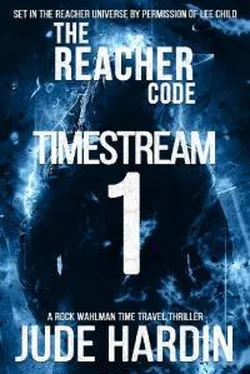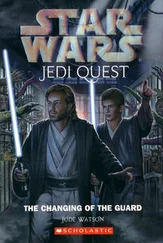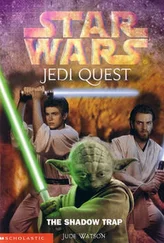McDaniels laughed.
“We haven’t figured that one out yet,” he said. “But maybe we will someday. You ready to spin?”
“I need a badge to clip onto my shirt. Something that says I’m a doctor.”
McDaniels reached into a drawer.
“I’m way ahead of you,” he said, pulling out a plastic ID card with Stahler’s picture on it. “Gregory Stahler, MD, Neurosurgical Services.”
He handed the badge to Stahler.
“Looks good,” Stahler said. “Sure you don’t want me to try to bring Wahlman back here to The Lab?”
“It doesn’t matter what I want,” McDaniels said. “We have to do what The Director tells us to do. No choice.”
“Did he give you a reason for deciding to handle it this way?”
“He didn’t have to. I already know the reason. Like most of the timestreams we’ve experimented with so far, the time limit for The Reacher Code: Timestream One is fifty-seven minutes and twenty-eight seconds. We round it down to an even fifty-seven minutes, to give us some margin of error. The frequencies on the reverse transmissions start destabilizing after that, and it’s hit or miss as to whether we’re able to bring the traveler back in one piece.”
Sometimes Stahler wondered if McDaniels just enjoyed listening to himself talk. Stahler knew all that stuff. He’d been living it for the past few days. Eight or nine spins per shift.
“So what would be the harm in just leaving him there in a coma?” he asked.
“No harm, unless he wakes up,” McDaniels said. “Then there could be a lot of harm. Then the shit could hit the fan in a big way. Rock Wahlman isn’t supposed to exist in that time period. If he gets stuck there in nineteen eighty-three, stuck there for the rest of his life, there’s no telling what kind of effect his presence will have on the future. Think about it. He could father a child who grows up to start another world war. He could be involved in an automobile accident that kills someone who would have done something great—someone who would have discovered a cure for a disease or something. The possibilities are endless. And scary as shit. That’s one of the reasons we were assigned these missions in the first place. To keep Topple from meddling with the past and potentially altering the future.”
Topple was the name of the organization intent on assassinating Jack Reacher. Nobody seemed to know exactly why they wanted to kill him, just that they did. McDaniels’ theory, based on some of the intelligence that had been passed down to him, was that it had something to do with the clones, the genetic duplicates that were eventually produced using blood drawn from Reacher at the Ramstein Air Base in 1983. Topple wanted Reacher dead before that blood was drawn, thereby assuring that the clones would never exist.
Wahlman and a man named Renfro were the first clones produced, both of them born in 2057. Soon after that, the Army abandoned the project. They locked away the files, gave Wahlman and Renfro fake histories and sent them to different orphanages in different states. End of story, until a few years ago when a general named Foss and a colonel named Dorland tried to get their own human cloning project going. Determined that their clones would be the first in history—and certain that their funding would dry up if that wasn’t the case—they decided to eliminate every shred of evidence that the previous experiment had ever taken place.
Which meant that Wahlman and Renfro had to go.
A group of hired assassins got Renfro, and they almost got Wahlman.
That particular threat had been taken care of, thanks to Wahlman’s superior skills and dogged persistence. But now there was Topple. Headed by a former FCYYC scientist named William Top, the rogue group of criminals had at least one working time machine and—according to McDaniels—were busy building more. So the race was on. FCYYC against Topple. And the stakes were enormous.
McDaniels didn’t think that Topple actually cared about what happened to Wahlman. In fact, he wasn’t sure that they even knew about him, that he was even on their radar. McDaniels figured they were interested in the younger Reacher clones, the ones born in 2083, the ones who had recently turned eighteen. Stahler didn’t know all the details, just what McDaniels had told him over some beers and tequila shots one night. Apparently these younger clones were being trained for Special Forces, individually, in different locations. Apparently there were thousands of them. So if Topple’s goal was to get rid of each and every one, getting rid of Reacher was probably the most efficient way to make it happen. Like killing a whole flock of birds with one stone.
Of course if Topple was successful, Wahlman would cease to exist along with the others. And while a deep desire to avoid that particular scenario had been part of his motivation for joining the FCYYC in the first place, his potential demise had probably never been an integral part of Topple’s big picture—whatever that ultimately happened to be. Whatever happened to Wahlman would probably be incidental. He would be collateral damage. That was the theory. But there was no way to predict the effect that erasing him and the other clones from existence would have on the history of the world.
Which meant that Topple had to be stopped.
Which meant that Reacher had to be protected, no matter what.
Of course the theoretically inadvertent threat that Wahlman had personally been facing from Topple was largely irrelevant now that The Director had made his decision. Wahlman would die in the line of duty, but not from anything that the enemy was planning to do. He would die by the hand of his own team. Regrettable, but apparently unavoidable, considering the circumstances.
Stahler clipped the ID to the pocket on his scrub shirt.
“I’ll just go into the room and turn the ventilator off and wait for his heart to stop,” he said. “Wait a few minutes, call a code blue. While everyone’s rushing around to get that going, I’ll slip out to the parking lot and ride away.”
“Sounds like a plan,” McDaniels said.
“Should be a piece of cake. In and out in fifteen minutes. Maybe not that long. And it’s not like Wahlman can do anything to stop it. Poor son of a bitch.”
Stahler exited the control room, climbed the pedestal and mounted the bike.
A few minutes later, he was on his way to 1983.
6
Wahlman stopped at a convenience store about two miles west of the base, parked the bike in the alley behind the store, next to an overflowing trashcan. He figured that Security Forces would be out in town looking for him sooner or later—probably sooner—and he didn’t want to make it too easy for them. Didn’t want them to be able to spot the motorcycle from the highway if they drove by.
He entered the store and found a stack of newspapers that were in English, bought one of the papers and a bottle of apple juice and traded one of his Deutsche Mark notes for extra coins when he got his change back. Walked outside, noticed some of the colorful posters taped to the inside of the plate glass window on his way to the phone booth. One of the posters was for some kind of carpet cleaning machine you could rent. Most of the others were beer and cigarette advertisements. Almost everything in German. He flipped his collar up, kept his back to the road, fed one of the coins into the slot on the top of the phone and punched the zero key to speak to an operator. She clicked on, said something that Wahlman didn’t understand. He asked her if she spoke English. She said that she did, and then she asked how she could help him.
“I need a phone number for a local woman named Diane Givens,” Wahlman said.
There was a brief pause. Static on the line.
Читать дальше












